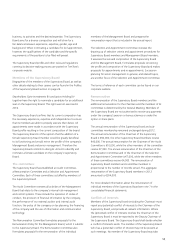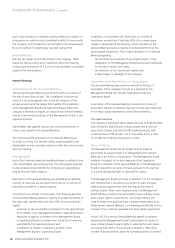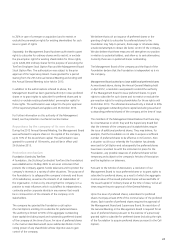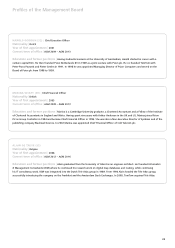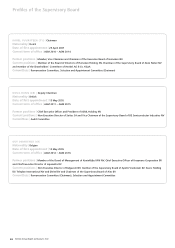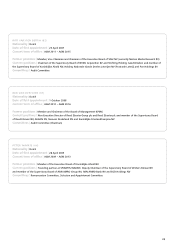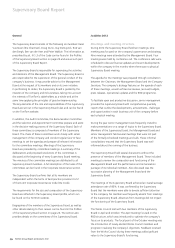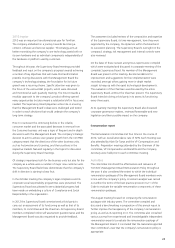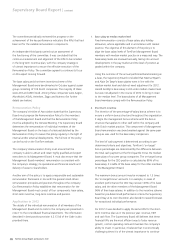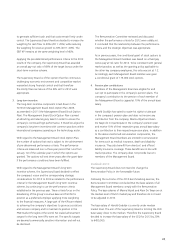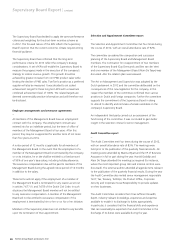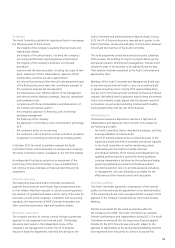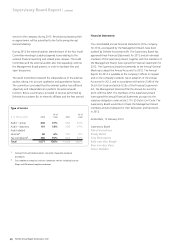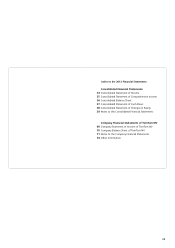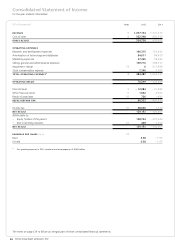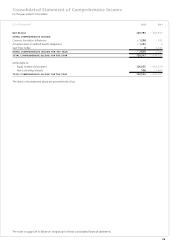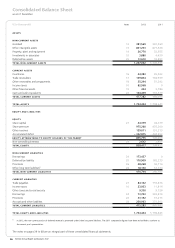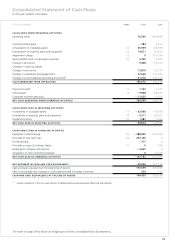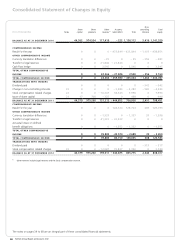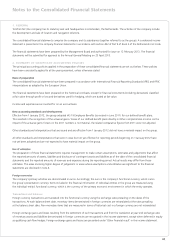TomTom 2012 Annual Report Download - page 31
Download and view the complete annual report
Please find page 31 of the 2012 TomTom annual report below. You can navigate through the pages in the report by either clicking on the pages listed below, or by using the keyword search tool below to find specific information within the annual report.29
to generate suffi cient cash and that costs remain fi rmly under
control. The Supervisory Board therefore decided to increase the
weighting for cash fl ow to 40% (2011: 20%) while
reducing
the weighting for revenue growth to 20% (2011: 40%).
The
EBIT KPI remains at the same weighting level of 40%.
Applying the pre-determined performance criteria to the 2012
results of the company, the Supervisory Board has awarded
an overall pay-out ratio of 69% of the target bonus under the
short-term incentive scheme.
The Supervisory Board is of the opinion that the continuous
challenging economic environment and competitive market
warranted strong fi nancial control and that therefore
the strictly fi nancial nature of the KPIs set for 2012 were
appropriate.
3. Long-term incentive
The long-term incentive component is laid down in the
TomTom Management Board Stock Option Plan 2009,
as amended in 2011 (the Management Board Stock Option
Plan). The Management Board Stock Option Plan is aimed
at attracting and retaining key talent in order to ensure the
company’s continued high performance. It therefore aligns the
company’s long-term incentives with common practices within
international companies operating in the technology sector.
With regard to the Management Board Stock Option Plan,
the number of options that vest is subject to the achievement
of pre-determined performance criteria. The performance
criteria are measured over a three year period that runs from
January 1st of the calendar year in which the options are
granted. The options will vest three years after the grant date
if the performance conditions have been fulfi lled.
With regard to the Management Board’s long-term
incentive scheme, the Supervisory Board decided to refl ect
the company’s vision and the corresponding strategic
considerations for 2012 to 2014 as related to the performance
criteria for the Management Board’s long-term incentive
scheme, by continuing to use the performance criteria
established in the previous year. These criteria focus on the
broadening of the group’s revenue base and TomTom’s
position as a preferred employer applying more weighting
to the fi nancial measures. A large part of the KPIs are related
to achieving the company’s objectives to grow as a solutions
and services company and to maintain its position in the
PND market throughout the world. No scaled achievement
ranges for the long term KPIs were set. The specifi c targets
are deemed commercially sensitive information and will not
be disclosed.
The Remuneration Committee reviewed and discussed
whether the performance criteria for 2012 were validly set.
It concluded that the relationship between the performance
criteria and the strategic objectives was appropriate.
As in previous years, the conditional grant of stock options to
the Management Board members was based on a fi xed pay
versus pay-at-risk ratio for 2012. To be consistent with general
market practice, as well as the granting policy applicable to
the other key company employees, this ratio was set at 1:2.
Accordingly, each Management Board member was given
a conditional grant of 175,000 stock options.
4. Pension plan contributions
Members of the Management Board are eligible for and
can opt to participate in the company’s pension plans. The
company’s contribution to the pension of each member of
the Management Board is capped at 10% of the annual base
salary.
Harold Goddijn has opted to waive his rights to take part
in the company’s pension plan and does not receive any
contribution from the company. Marina Wyatt and Alain
De Taeye do not participate in the company’s pension plan
and receive 10% of their respective gross annual base salary
as a contribution to their respective pension plans. In addition
to the above-mentioned remuneration components, the
Management Board members are entitled to remuneration
for items such as medical insurance, death and disability
insurance. They also benefi t from directors’ and offi cers’
liability insurance coverage. These benefi ts are in line with
market practice. The company does not provide loans to
members of the Management Board.
Outlook 2013
The Supervisory Board does not intend to change the
Remuneration Policy in the foreseeable future.
Following the outcome of the 2012 benchmarking exercise, the
Remuneration Committee concluded that the base salaries of all
Management Board members comply with the Remuneration
Policy. The base salaries of Marina Wyatt and Alain De Taeye are at
the median level of Dutch market pay and therefore do not need
to be adjusted in 2013.
The base salary of Harold Goddijn is currently under median
market level. The aim of the Supervisory Board is to bring the CEO
base salary closer to the median. Therefore the Supervisory Board
decided to increase the base salary of the CEO for 2013 by 20%
to €450,000.


